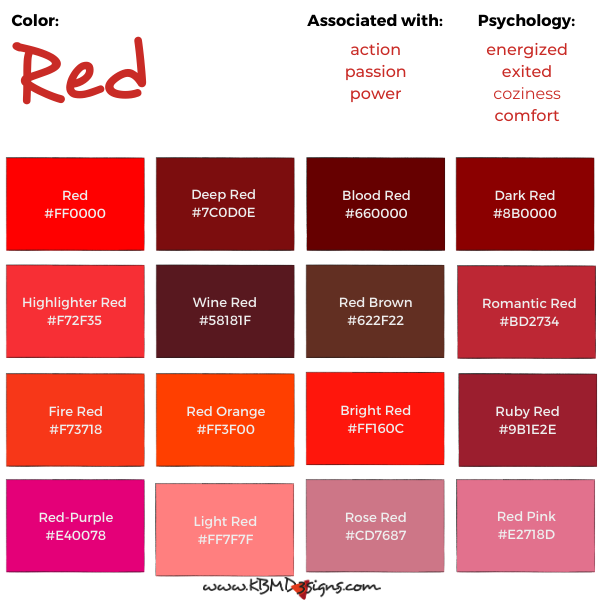🤖 AI-Generated Content
This content has been created using artificial intelligence. While we strive for accuracy, please verify important information independently.
There is, you know, a rather interesting idea floating around among coffee lovers: putting a little bit of Red Mill baking soda into their daily cup. It might sound a bit odd at first, to be honest, a kitchen staple usually reserved for baking or cleaning finding its way into your morning pick-me-up. Yet, for some folks, this simple addition could actually change their coffee experience in a pretty big way, perhaps making it feel a little smoother on the stomach.
People often look for ways to make their coffee more agreeable, especially if they find it causes a bit of discomfort. The natural acidity in coffee can, for some, bring on a feeling of unease or a slight sourness after drinking it. This is where something like Red Mill baking soda comes into the picture, offering a simple, at-home approach to potentially adjust the coffee's characteristics. It's almost like a small experiment many people try, hoping for a gentler brew.
So, this practice, while perhaps not widely known, has a simple idea behind it: to help balance things out. It's a way people try to soften the coffee's edge, hoping to enjoy their favorite drink without any of the usual drawbacks. We will, in a way, explore what happens when you add this common ingredient to your coffee and what kind of impact it might have on your daily routine.
- Sav Labrant Age
- Somali Wasmo Telegram
- Jameliz Benitez Smith Leaks
- The Corner Store
- Hannah Waddingham Nude
Table of Contents
- What Happens When You Add Red Mill Baking Soda to Coffee?
- Why Do People Put Red Mill Baking Soda in Their Coffee?
- Does Red Mill Baking Soda Change the Taste of Coffee?
- How Much Red Mill Baking Soda Should You Use in Coffee?
- What Are Some Experiences with Red Mill Baking Soda in Coffee?
- Are There Any Downsides to Adding Red Mill Baking Soda to Coffee?
- Can Red Mill Baking Soda in Coffee Help with Stomach Issues?
- What Else Should You Keep in Mind About Red Mill Baking Soda in Coffee?
What Happens When You Add Red Mill Baking Soda to Coffee?
When you put Red Mill baking soda into your coffee, a quiet little chemical reaction takes place. Coffee, you know, has natural acids in it, and these are what give it that distinct, sometimes sharp, flavor. Baking soda, on the other hand, is what we call an alkaline substance, meaning it's on the opposite side of the pH scale from acids. So, when these two meet, they tend to neutralize each other a bit. It’s a bit like mixing a sour lemon with something that takes away some of its tartness.
This interaction means that the overall acidity of your coffee can become less pronounced. For people who find coffee a bit too harsh or who feel a burning sensation after drinking it, this could be a welcome change. It's not about making the coffee taste like something else entirely, but rather about smoothing out its natural characteristics. You might notice the coffee feels less biting on your tongue, perhaps a bit softer as it goes down. It's really about making the drink feel more comfortable to consume, especially for those with a sensitive digestive system, as a matter of fact.
The visual aspect of adding Red Mill baking soda to coffee is also something to consider. You might see a little fizz or bubbling when you first stir it in, which is just the gases escaping as the acid and alkaline components react. This is completely normal and shows the process is happening. After a moment, the fizz usually settles, and your coffee looks pretty much the same as it did before, just with a slightly altered internal chemistry. It's a subtle change, but one that can, for some, make a noticeable difference in how their body reacts to their morning cup.
Why Do People Put Red Mill Baking Soda in Their Coffee?
People often decide to put Red Mill baking soda in their coffee for one main reason: to make it easier on their stomach. Many individuals, myself included sometimes, find that coffee can cause a bit of heartburn or an upset feeling in their digestive tract. This is largely due to the coffee's natural acidity. By adding a small amount of baking soda, they are hoping to reduce this acidic quality, making the coffee less likely to irritate their system. It's a simple home remedy, really, that many have tried over the years.
Another reason people might try this is to improve the coffee's overall taste experience. While some enjoy the sharp, bright notes of highly acidic coffee, others prefer a smoother, more mellow flavor. Reducing the acidity with Red Mill baking soda can round out the coffee's profile, making it taste less bitter or sour. It's almost like taking the edge off a very strong drink, allowing other, more subtle flavors to come through. This can be particularly appealing for those who drink darker roasts, which can sometimes be quite intense, you know.
Furthermore, some folks might simply be curious to experiment with their daily brew. With so many ways to prepare coffee, adding something unexpected like Red Mill baking soda can be an interesting way to customize the experience. It's about finding what works best for their personal preferences and comfort. For those who are constantly seeking a better, more enjoyable coffee moment, this little trick is just another avenue to explore. It’s like a small kitchen adventure, in a way, that could lead to a more pleasant daily ritual.
Does Red Mill Baking Soda Change the Taste of Coffee?
Yes, Red Mill baking soda can certainly change the taste of coffee, though the extent of that change really depends on how much you use and your own taste sensitivities. The primary way it affects flavor is by cutting down on the coffee's natural acidity. This can make the coffee taste less bright, less sharp, and often less bitter. For some, this means a smoother, more approachable cup. It's like taking a very tart fruit and making it just a little sweeter, if that makes sense.
If you use too much Red Mill baking soda, however, you might notice a distinct, somewhat soapy or metallic taste. This is generally not what people are aiming for, and it can definitely make your coffee less appealing. It’s a very fine line, you know, between just enough to mellow the acidity and too much that it introduces an unwanted flavor. This is why starting with a very small amount is always a good idea, just to see how it affects things.
The goal for most people is to achieve a more balanced flavor profile without introducing any strange notes. They want their coffee to still taste like coffee, but a version that is gentler on their palate and stomach. So, while it does change the taste, the hope is for a positive change – a softening of harsh edges, rather than a complete transformation of the coffee's character. It's a subtle adjustment that can, you know, make a big difference in how you perceive your morning cup, almost like a secret ingredient.
How Much Red Mill Baking Soda Should You Use in Coffee?
When thinking about how much Red Mill baking soda to use in coffee, the general advice is to start with a very, very tiny amount. We are talking about something like a quarter of a teaspoon, or even less, for a standard cup of coffee. It's really about experimenting to find what works for you, because everyone's taste is a little different, and what one person finds just right, another might find too much or too little. It's a bit like seasoning food, in that sense, you know.
The key here is to add it slowly and taste as you go. You could, for instance, stir in a tiny pinch, take a sip, and if you feel it needs more, add another tiny pinch. This way, you can avoid overdoing it and ending up with that undesirable soapy flavor we talked about. It's better to add too little and need more than to add too much and ruin your whole cup. So, being patient and methodical is, you know, pretty important here.
For a regular-sized mug, a mere eighth of a teaspoon of Red Mill baking soda is often a good starting point. Some people even just dip the tip of a spoon into the powder and then stir that into their coffee. It’s truly about finding that sweet spot where the coffee feels less acidic without tasting odd. Remember, the goal is to make the coffee more pleasant, not to turn it into something else entirely. This small adjustment can, you know, make a noticeable difference without overpowering the coffee's natural qualities.
What Are Some Experiences with Red Mill Baking Soda in Coffee?
People who have tried adding Red Mill baking soda to their coffee often share a range of experiences. Many report a definite feeling of relief from acid reflux or heartburn, which is, you know, a pretty common complaint for coffee drinkers. They describe their stomach feeling calmer and less irritated after drinking their usual amount of coffee, something that might have caused discomfort before. It’s like a small sigh of relief for their digestive system, apparently.
On the taste front, the experiences vary quite a bit. Some folks say the coffee tastes noticeably smoother and less bitter, which they really appreciate. They feel it brings out a different side of their coffee, making it more enjoyable. Others, however, might not detect a huge difference in taste, or if they add too much, they might pick up on an odd, slightly salty or metallic note that isn't particularly pleasant. It really highlights how individual taste can be, you know, in these situations.
Then there are those who tried it out of curiosity and found it simply wasn't for them, or they didn't notice enough of a benefit to keep doing it. It's not a magic bullet for everyone, and that's perfectly fine. The idea is to explore what works for your body and your taste buds. So, while many find it helpful, it's also true that some people just don't get the same positive results. It's like trying a new food, you know, some people love it, and some don't, which is totally normal for Red Mill baking soda in coffee.
Are There Any Downsides to Adding Red Mill Baking Soda to Coffee?
While adding Red Mill baking soda to coffee can have benefits, there are, you know, some potential downsides to be aware of. The most common one, as mentioned before, is the risk of an unpleasant taste if you add too much. A soapy or metallic flavor can really spoil a good cup of coffee, and it’s something to be careful about. It’s like putting too much salt in a dish; it just throws everything off, so to speak.
Another thing to think about is the effect on your body over time. Baking soda is a source of sodium, and while a tiny amount in coffee is probably not a big deal for most people, those who need to watch their sodium intake should definitely be mindful. It's not a huge amount, but every little bit adds up, you know, especially if you drink multiple cups a day. So, for some, it might be a consideration, even if it seems like a small addition.
Also, relying solely on Red Mill baking soda to fix stomach issues might not address the root cause of discomfort. If you're consistently experiencing significant heartburn or digestive problems from coffee, it might be worth talking to a healthcare provider. While baking soda can offer temporary relief, it's not a substitute for proper medical advice if there's an underlying issue. It's just a simple adjustment, not a solution for deeper health concerns, in some respects.
Can Red Mill Baking Soda in Coffee Help with Stomach Issues?
For many people, Red Mill baking soda in coffee can indeed offer some relief from stomach issues, particularly those related to acidity. Coffee is, by its very nature, an acidic drink, and for some individuals, this acidity can trigger discomfort like heartburn, acid reflux, or a general feeling of unease in the stomach. Baking soda, being an alkaline substance, works to neutralize some of this acid. It’s a bit like putting out a small fire with water, so to speak.
When the acidity in the coffee is lessened, the stomach lining may experience less irritation. This can lead to a more comfortable drinking experience, especially for those who love coffee but dread the aftermath. It's a simple, readily available way to modify the drink to make it more agreeable to one's digestive system. Many people report a noticeable difference, feeling that their coffee goes down more smoothly and causes less agitation later on. It’s a very practical solution for a common problem, apparently.
However, it's important to remember that while Red Mill baking soda can help with symptoms related to acidity, it doesn't address other potential causes of stomach upset from coffee. For instance, some people might be sensitive to caffeine itself, or other compounds in coffee, which baking soda won't help with. So, while it can be a useful trick for acid-related discomfort, it's not a universal fix for all coffee-induced stomach problems. It's a specific tool for a specific kind of issue, you know, but it can be quite effective for that purpose.
What Else Should You Keep in Mind About Red Mill Baking Soda in Coffee?
When considering Red Mill baking soda in coffee, there are a few other things to keep in mind, just to make sure your experience is a good one. First off, always make sure you're using pure baking soda, not baking powder. They are different things, and baking powder contains other ingredients that might not be suitable for drinking and could create an even stranger taste in your coffee. So, checking the label is, you know, pretty important here.
Also, think about the kind of coffee you're drinking. Lighter roasts tend to be more acidic than darker roasts, so you might find that adding Red Mill baking soda has a more noticeable effect on them. If you typically drink very dark, low-acid coffee, you might not feel as much of a difference, or you might need even less baking soda. It's all about how the baking soda interacts with the coffee's existing characteristics, which can vary widely, you know.
Finally, remember that this is a personal preference and an experiment. What works for one person might not work for another. It's about listening to your body and your taste buds. Don't feel pressured to keep doing it if you don't enjoy the results. It's just one of many ways people try to customize their coffee experience, and there's no right or wrong answer, really. It’s just about finding what makes your coffee, you know, the most enjoyable for you, in a way.
This article has explored the practice of adding Red Mill baking soda to coffee, covering what happens when these two meet, why people choose to do it, and how it might affect the coffee's taste. We also looked at how much to use, common experiences, potential downsides, and its role in helping with stomach issues. Finally, we considered other important factors to keep in mind for those curious about this unique coffee adjustment.
Additional Resources
Visual Content



Disclaimer: This content was generated using AI technology. While every effort has been made to ensure accuracy, we recommend consulting multiple sources for critical decisions or research purposes.
